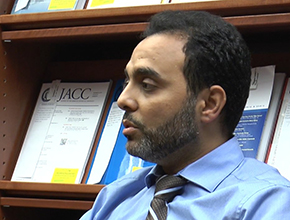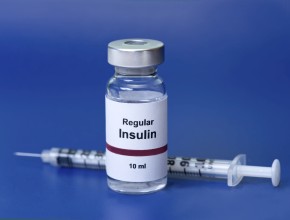References
Rhodes A, Evans LE, Alhazzani W, et al. Surviving Sepsis Campaign: International Guidelines for Management of Sepsis and Septic Shock: 2016. Crit Care Med. 2017 Jan 17. doi: 10.1097/CCM.0000000000002255. [Epub ahead of print] PubMed PMID: 28098591.This video is part of a special 6-episode series of McMaster Perspective focusing on Surviving Sepsis Campaign 2016 guidelines.
Roman Jaeschke: Good morning. Another edition of McMaster Perspective, again with Doctor Waleed Alhazzani, the chair of the methodology section of the Surviving Sepsis Campaign. We keep going through those guidelines and a few other specific topics. Maybe we will start with a general discussion on sedation and analgesia in the intensive care unit (ICU). What could you tell us about the atmosphere in this discussion?
Waleed Alhazzani: For the general sedation and analgesia – again, for the purpose of septic population most of the studies looked at critically ill patients and generalizability of these results to patients with sepsis – we felt that it is probably ok. I just have to say there will be specific guidelines issued by the Society of Critical Care Medicine (SCCM) that address sedation and analgesia in critically ill patients in general, including septic patients, of course, in much more detail. If you want us to talk about specific recommendations, I will be happy to; if you want to, pick one of the specific recommendations that we can address in more detail.
RJ: […] There is a general best-practice statement about minimizing sedation.
WA: So minimizing sedation: although here it is a best-practice statement, the evidence of using what you call light sedation, in which patients are probably awake and calm, versus deep sedation, where patients are unconscious, really depends on patient values and preferences, I will have to be honest. In this specific guideline, we did not go into much more detail. We thought, looking at the evidence it is probably hard to summarize a heterogeneous population. We thought the pros of using light sedation outweigh any cons that could develop. We have to be cautious that some patients would be terrified of being awake in the ICU and they want to be knocked out and just awoken when there is a consideration for extubation. There are concerns of things like posttraumatic stress disorder (PTSD), depression; however, all the studies that looked at this are very low quality studies, very imprecise estimates. We do not know what the impact is on these important outcomes. We know that probably patients will have a shorter duration of mechanical ventilation…
RJ: With lighter sedation?
WA: With lighter sedation. There is a shorter time to extubation or wake up time for sure that has been shown, at least from low to moderate quality evidence, so we thought that the benefit of using light sedation outweighs the harm of using this intervention. Therefore, the group decided to issue a best-practice statement, although a more detailed discussion will be addressed in separate guidelines.
RJ: So it is a general direction of using less rather than more, but there are no major details. I see that the recommendations on glucose control are essentially the same – try not to exceed 10 mmol/L. I see that for renal replacement therapy, there is only a weak recommendation with a suggestion of using continuous rather than intermittent [therapy] in people who are hemodynamically unstable, but again it is labelled as very low quality of evidence, so if somebody chooses differently, it is obviously not wrong. Maybe I would like to spend a minute or two on bicarbonate therapy. It says do not use it if your pH is over 7.15. It does not say anything what to do if it is less than 7.15. On purpose?
WA: It is a good question. The issue of bicarbonate therapy in patients with sepsis, hyperlactatemia-induced acidosis, is not supported – or it is understudied, let’s say. There were only 2 small randomized controlled trials (RCTs) that did not specifically address patients with severe acidosis, but the general practice from these 2 studies [is that] maybe using bicarbonate therapies when you have a lower pH might be helpful; using it in the context of a pH higher than 7.10 may cause some harm theoretically – paradoxical intracellular acidosis – and the benefit of using the intervention clinically is not clear. However, honestly, I still in my practice consider bicarbonate therapy in some patients with metabolic acidosis even in thresholds higher than what we recommended in this guideline and I think this is an important area that needs to be explored in future studies. Again, it is an intervention that is commonly available that clinicians I suspect use very often; however, there are no clear answers from evidence. We need more studies…
RJ: So, interestingly, no specific recommendations here, which again leaves flexibility to people. Your area of expertise, as you are not only an intensivist but a gastroenterologist as well, is in stress ulcer prophylaxis. Maybe you can summarize this particular section for us.
WA: Because the Surviving Sepsis [Campaign] is one the most, if not the most, commonly read guidelines in the critical care field, we tend to address or broaden the scope of coverage to include not only interventions for treatment of sepsis patients but also prevention strategies as well, because we thought this was an important message to get to clinicians who are reading the guidelines. One of the interventions is the stress ulcer prophylaxis. I will summarize what was written in the guideline. However, I have an academic conflict of interest because I am interested in this area, so I did not participate in formulating those recommendations. It was formulated independently of my own opinions or interpretation of the literature, let’s say.
In patients who have risk factors, and we are talking about patients who are mechanically ventilated for 48 hours – and I believe we discussed this in a previous video for McMaster Textbook [see: Stress ulcer prophylaxis in critical care: a 2016 perspective] – or who are coagulopathic. We know that these patients are at higher risk of bleeding, therefore we recommend using stress ulcer prophylaxis in this specific population. Obviously, not every patient will be suitable, so if a patient is admitted to the ICU without those 2 risk factors, probably they will not be the best candidate for stress ulcer prophylaxis; that is important to highlight.
Next question would be then: OK, we have a patient with risk factors, which agent should we be using? Although the meta-analyses consistently showed that proton pump inhibitors (PPIs) are probably better than H2-blockers in reducing the risk of bleeding, there is uncertainty about other outcomes, infectious complications like pneumonia or Clostridium difficile infection. The Surviving Sepsis Campaign guideline panel felt that this uncertainty should reflect on the recommendation because yes, it might reduce the risk of bleeding, however, on the other hand, there are observational studies suggesting that the risk of C difficile is probably higher in patients who receive PPIs; [this is] low quality of evidence or even very low quality evidence. It was taken seriously by the group and they felt that they could not recommend one intervention over the other. They suggested to start with either PPIs [or H2-blockers]… if your institution or [if] you feel comfortable using PPIs and let’s say the C difficile risk is not that high at your institution – which is the fact, as we got some feedback, especially from European colleagues, that C difficile is not a major problem in some centers in Europe; whether it is underdiagnosis or it is an actual fact that there is no C difficile was hard to say. So if people feel comfortable to use PPIs and the downsides are not a major issue, then use PPIs. If, on the other hand, C difficile, for example, is an issue or is a big concern in the institution you are practicing in, and you feel more comfortable using H2-blockers, then H2-blockers are still a reasonable option to use.
Also, I just want to highlight that when there is no indication to use these medications, please stop them, as also we know from surveys that patients get started on those agents and a good number of them will go home on these agents, not to the ward even – they just get discharged.
RJ: Even though they are used for a definable period of risks in intensive care. Maybe last question here: you mentioned coagulopathy. Could you give our readers, our listeners some idea of what it means?
WA: Yes. Coagulopathy basically refers to thrombocytopenia – less than 50, that is your threshold – or an international normalized ratio (INR) of more than 1.5, or an activated partial thromboplastin time (aPTT) that is more than 2 times the upper limit of normal. These are based on the previous work of Doctor Cook that looked at what risk factors are available. There were a few studies published afterwards that showed that coagulopathy is important, and another study recently published did not show that mechanical ventilation is a strong predictor of bleeding; however, we still consider that based on just comparative quality of both studies.
RJ: So you still have research areas to do. Doctor Alhazzani, I want to thank you for this series of commentaries on the Surviving Sepsis Campaign. Again, I want to congratulate you on your role in this and all the best in your research.
WA: Thank you for having me.
 English
English
 Español
Español
 українська
українська








